In order to get to Paradise Cave, we first got to a large parking lot surrounded by restaurants for tourists and souvenir shops, and from there we took small electric vehicles in order to get to the spot from which one needs to climb up the mountain. There is a choice though: stairs (shorter and harder route) or paved path (longer and less strenuous route). Sneza and I had never been persons who shy away before challenges, so covered in sweat and breathless we got to the top of the stairs after a while. We then listened to some presentation with data and got a whole hour to explore the section of the cave earmarked for tourists. Namely, Paradise Cave is 34.1 km long. The first kilometre is envisaged for tourists. Only some rare groups in certain periods of year are allowed to cover the distance of 7 km and get out using a side entrance/exit. The reason for this is that the lighting installed in the cave, the temperature that goes up on account of the lighting, as well as the visitors, together with the carbon-dioxide exhaled by the visitors actually damage the cave and it stops “growing.”
The pictures that follow are great and yet they are only a pale reflection of what one experiences when seeing all of this live. The Phong Nha National Park is the place that is mostly frequented by young foreign tourists since there are many trips that include adventurism, like taking a zip-line, swimming in rivers, paddling a kayak around caves, etc., but this is certainly a place not to be missed out by the not so young even if they didn’t do any of these adventures. The stairs suffice. Thus, to get into Paradise Cave one needs to go down the interior stairs (that need to be climbed up in the end), but this is all absolutely worth the trouble. You are going to be left breathless anyway when you see the spectacular beauty of this suitably called Paradise Cave.
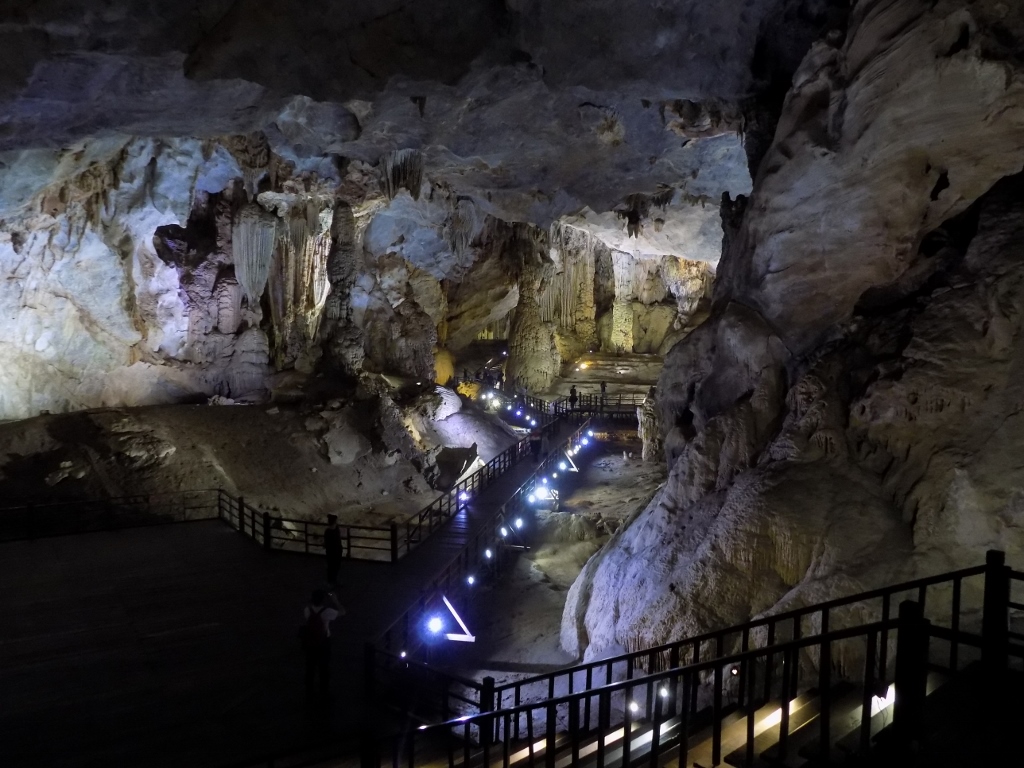 Paradise Cave, descending into paradise
Paradise Cave, descending into paradise
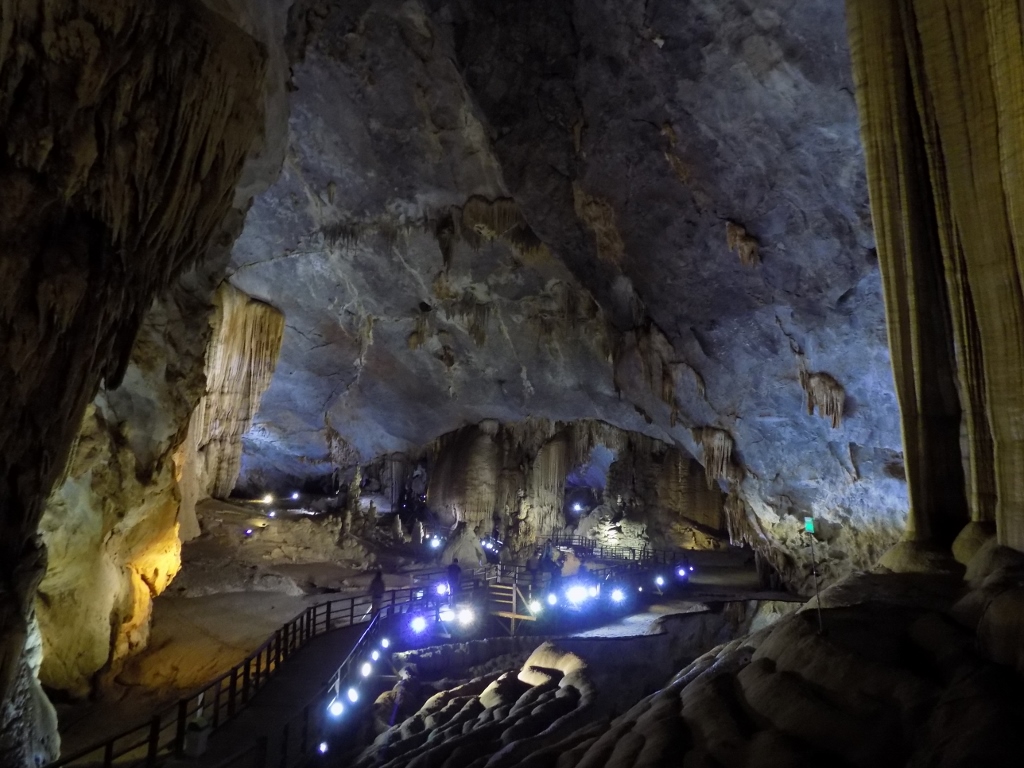 Paradise Cave
Paradise Cave
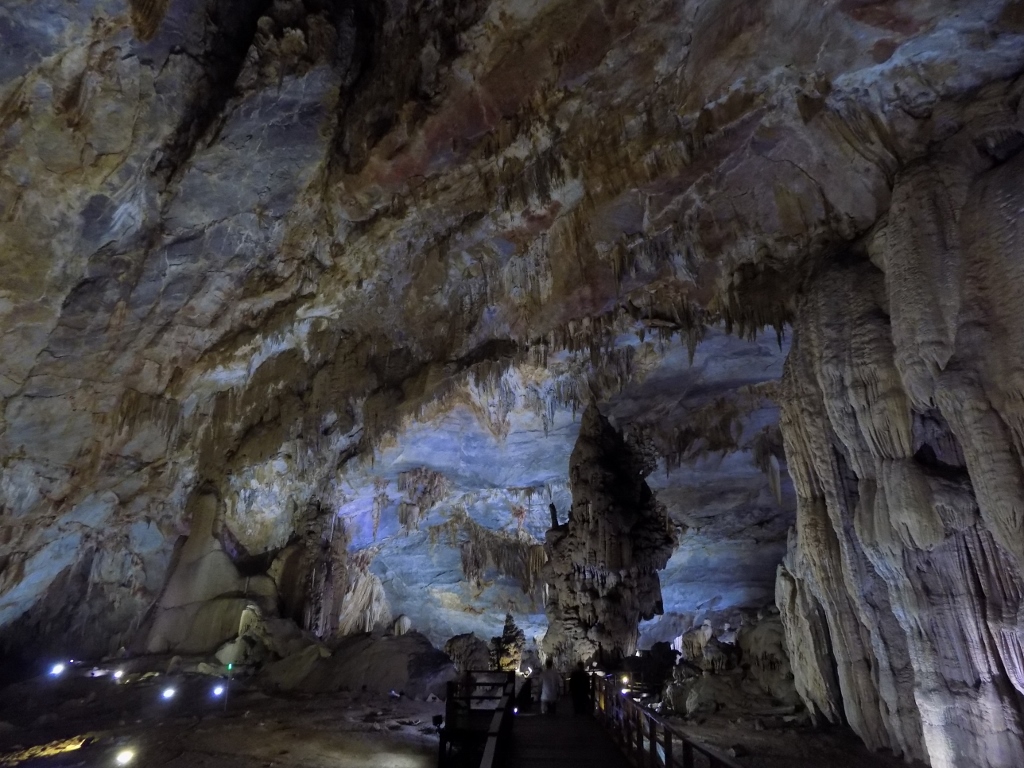 Paradise Cave
Paradise Cave
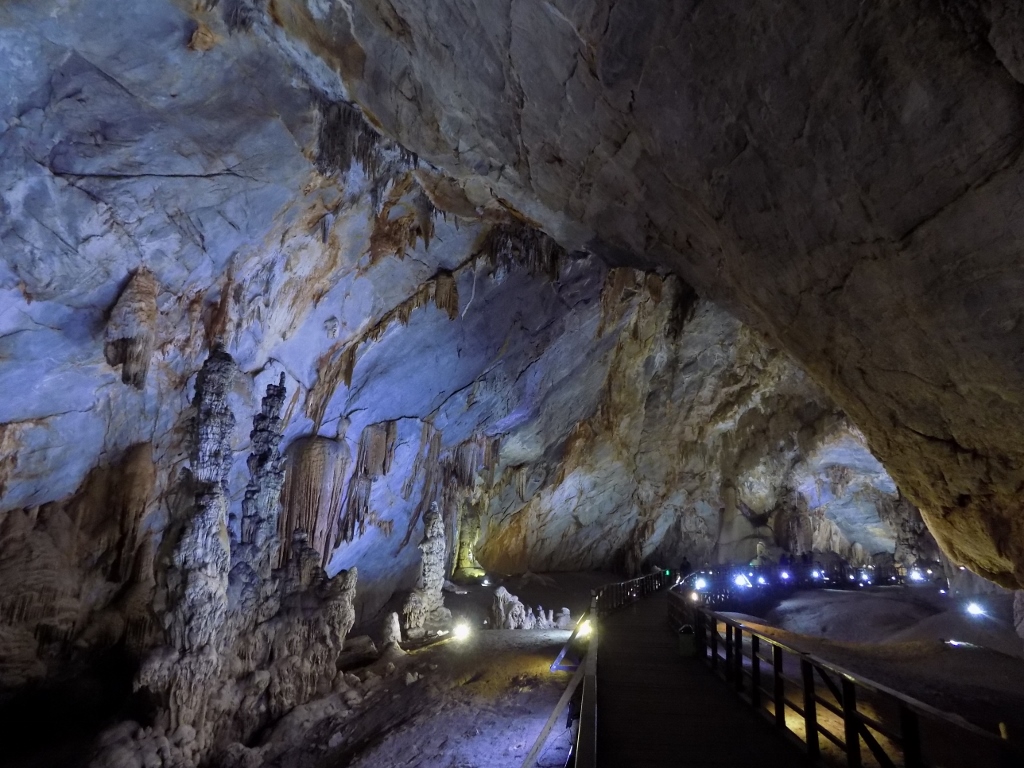 Paradise Cave
Paradise Cave
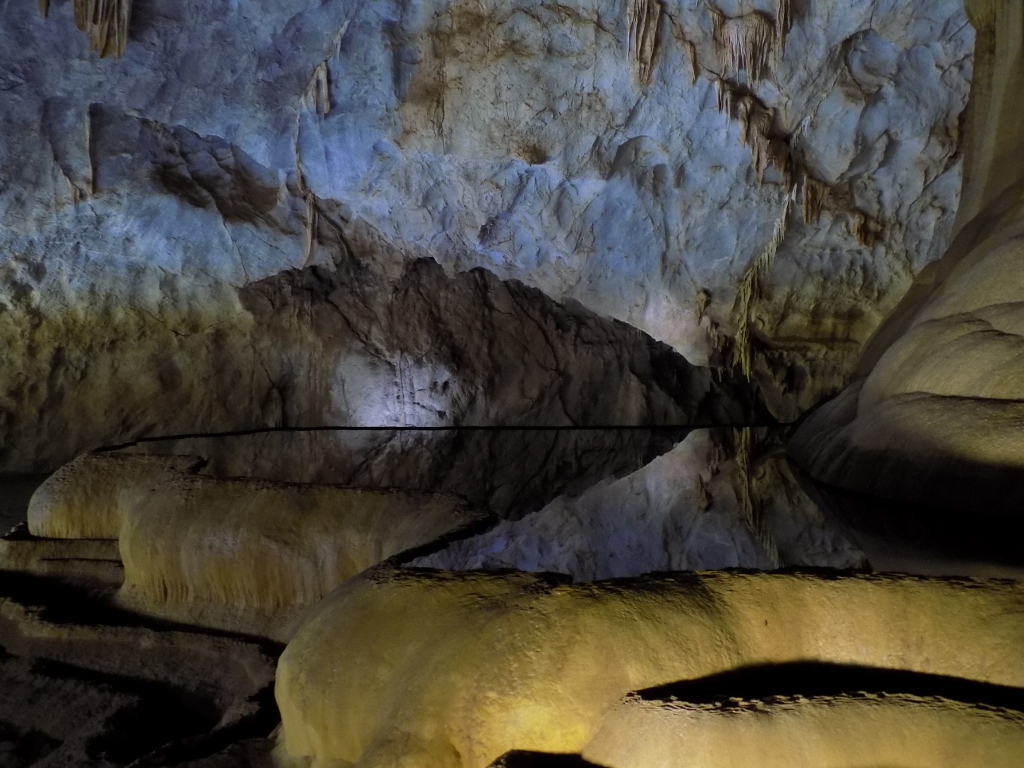 Paradise Cave, a detail
Paradise Cave, a detail
The colours are truly amazing and here I realized that the blue I had thought the farmer from Tam Coc actually had painted appears naturally. I do apologize.
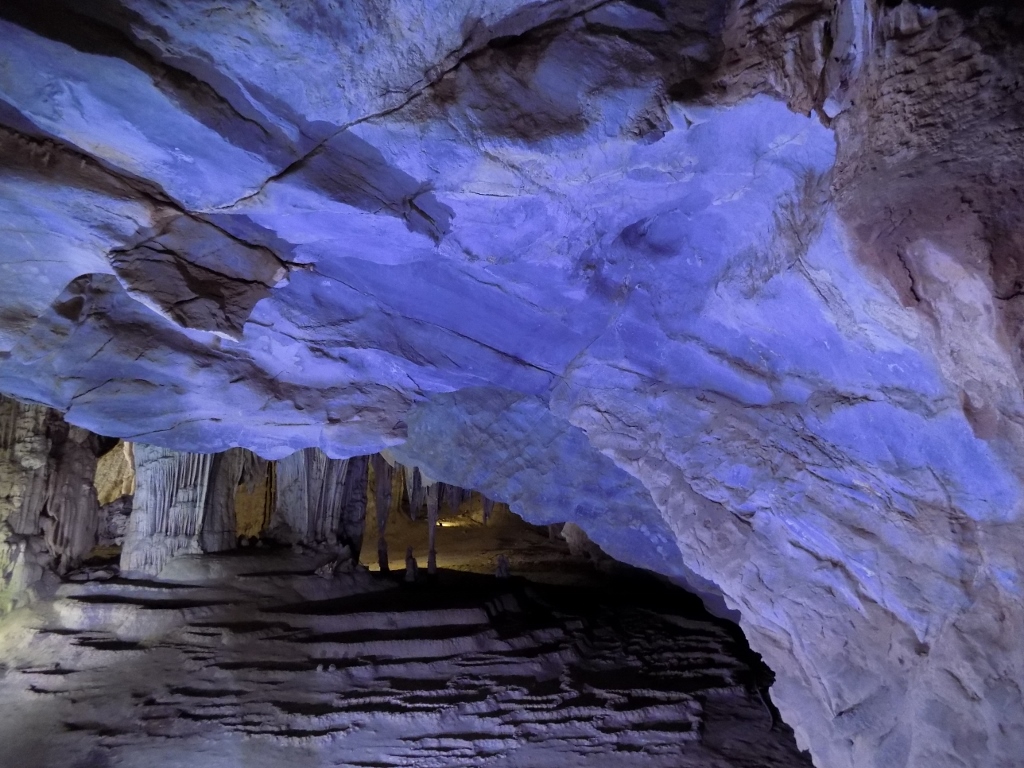 Incredible blue colour of the rock at Paradise Cave
Incredible blue colour of the rock at Paradise Cave
Talking about colours, at some point Sneza said: “Imagine if Michelangelo could have seen this.” I had the same association as she – an unmistakable sensation that I was at an “abstract” Sistine Chapel. Just look at the colours...
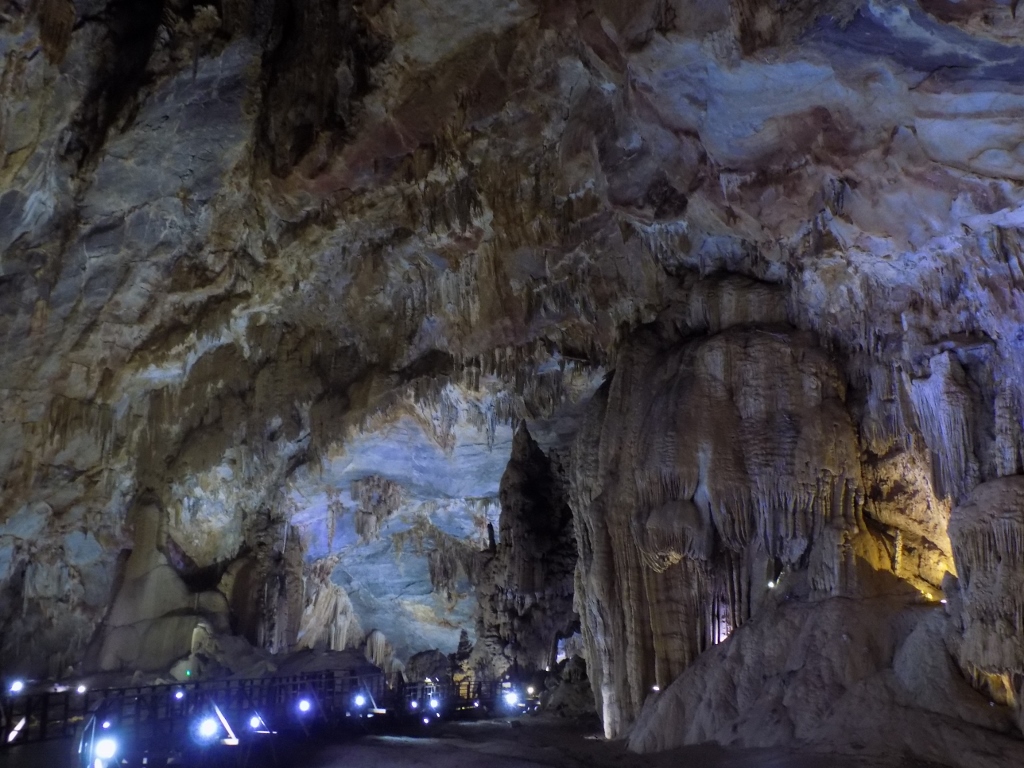 Paradise Cave
Paradise Cave
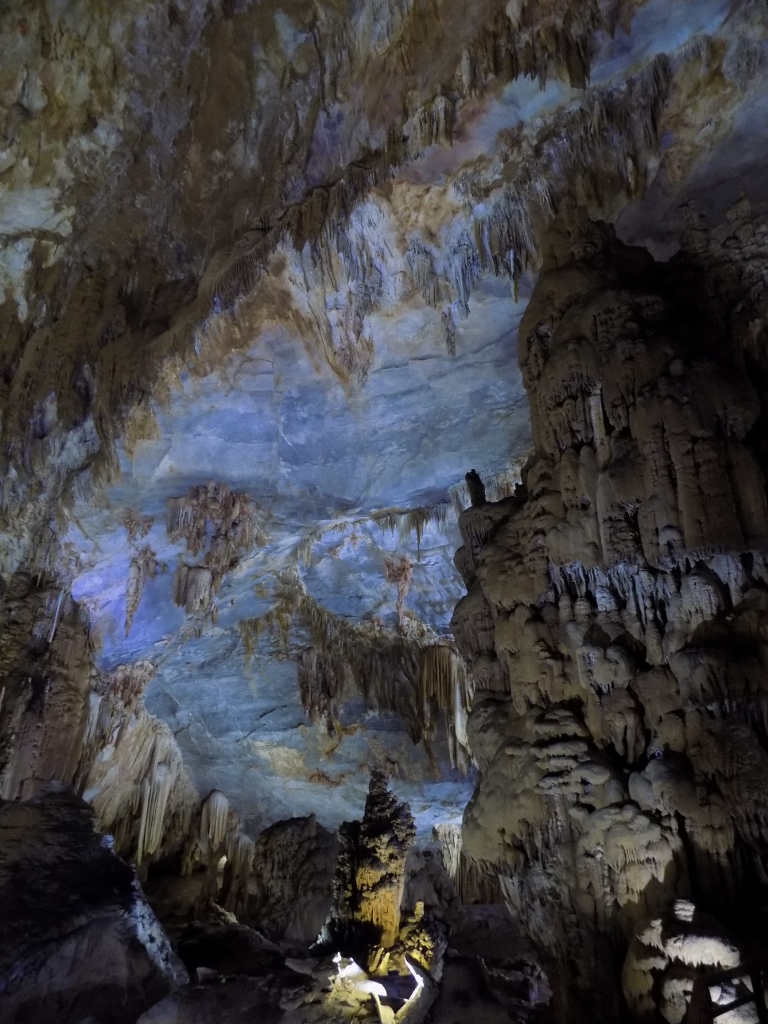 Paradise Cave
Paradise Cave
An hour we got for the visiting of the cave seemed like too short a period and I think I could have spent days and days there without getting bored at all.
This was all followed by lunch and then we were driven around for quite some time in order to get to the beginning of Son Trach itself, the village we slept at, since this is the place from which metal boats start that take tourists to yet another cave and that is Phong Nha Cave after which the entire park was named. The sailing goes along the Son river that passes by the village.
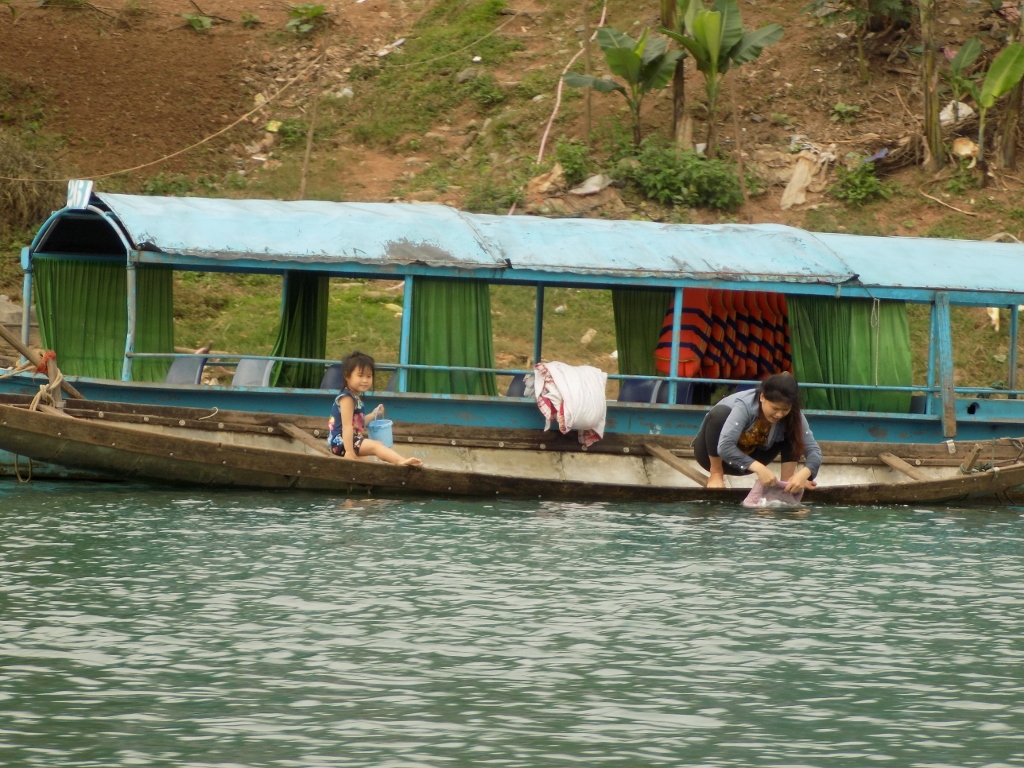 Life on the banks of the Son
Life on the banks of the Son
As we were approaching the entrance into Phong Nha Cave I thought at some point that it would be like what we had seen in Trang An, but it was not.
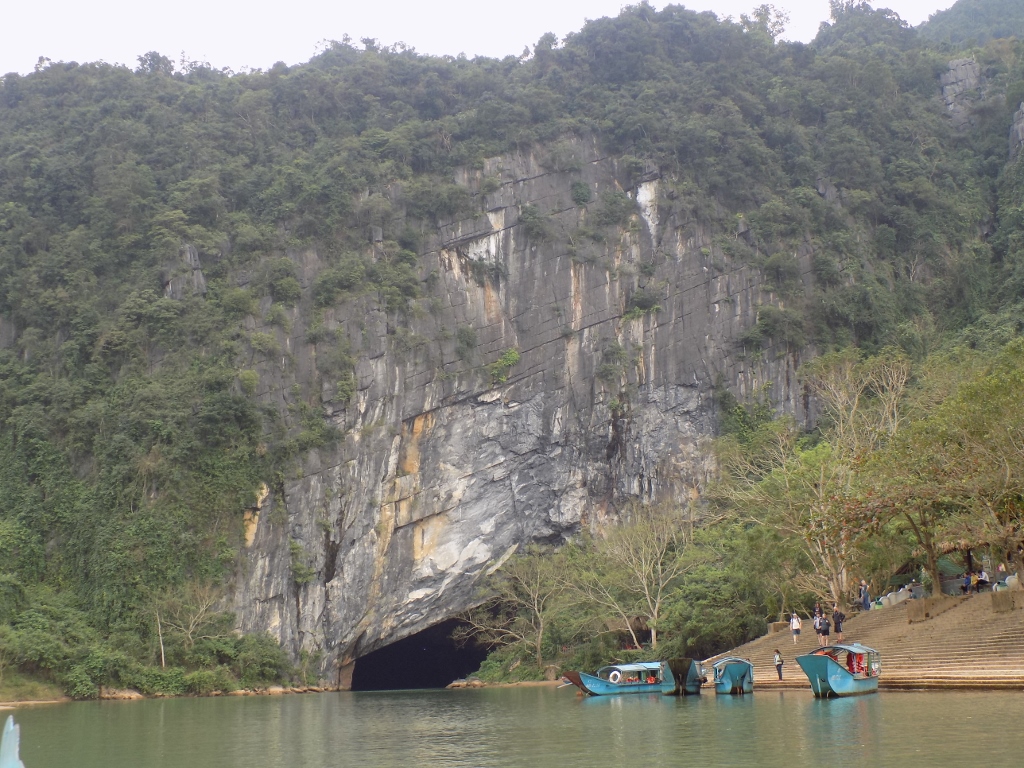 Entrance into Phong Nha
Entrance into Phong Nha
The fact is that visitors enter the cave in boats, but this is a very large cave, significantly bigger than anything we had seen in Trang An and here we went in for about 1 km at which point the boat turned and went back to a point just before exiting from the cave, since there is a place to get out on the “shore” and complete the visit on foot. Again, the impressions were fantastic and everything in the cave was wonderful and unbelievable.
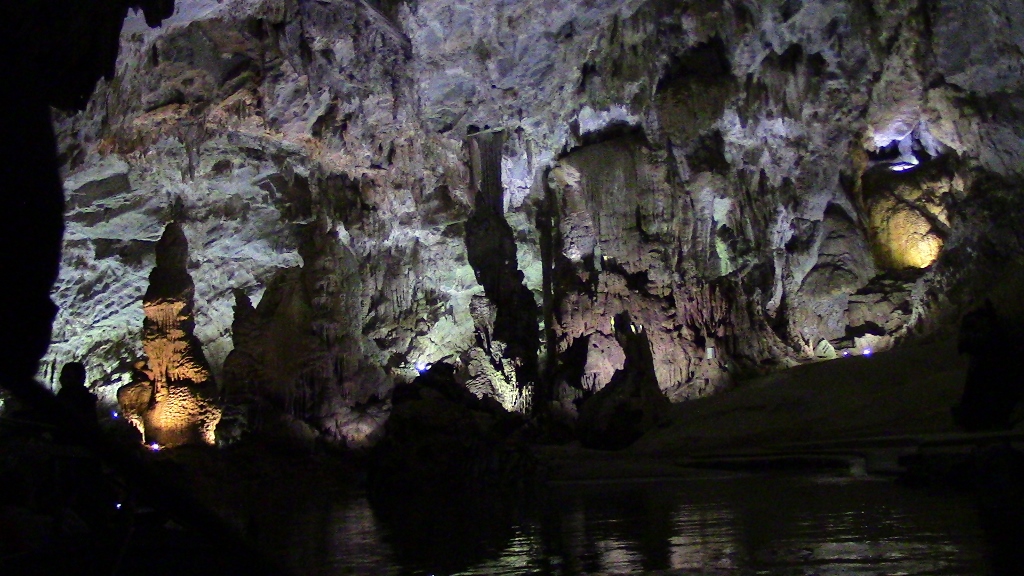 Phong Nha Cave
Phong Nha Cave
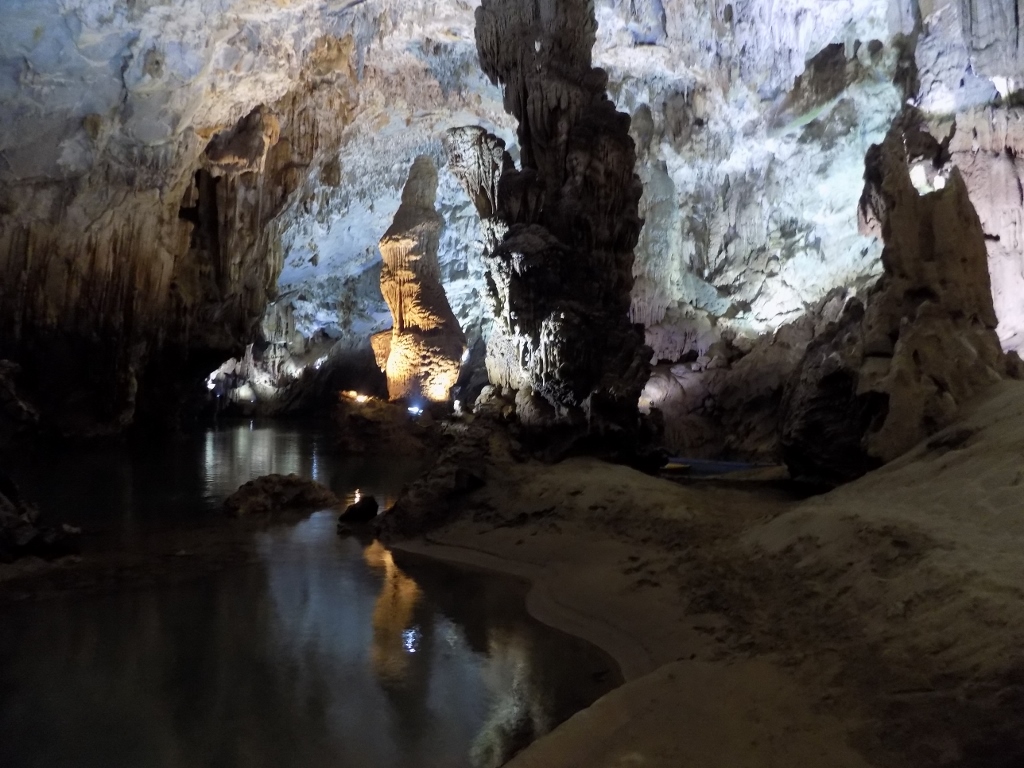 Phong Nha Cave
Phong Nha Cave
In order to give you as much as possible the sense of what we experienced when floating through Phong Nha cave, here is a brief video.
By the way, in the past there used to be stalactites at the entrance into the cave which appeared like teeth and hence the name of the cave meaning “Wind and teeth.” During this excursion, we went to two caves and there are a few others that may be visited, while the rest of the known caves are not suitable for tourists since these caves were used extensively during the American War (i.e., the Vietnam War). On the one hand, the Vietnamese forces used them for hiding and storing ammunition, while on the other the Americans bombed them heavily, so even today many caves still contain unexploded bombs and it is therefore very dangerous to venture there.
We spent the evening in Son Trach taking coffee and eating, and it was not a bad way altogether to end a day filled with so much beauty.
The following day we took a coach to transfer to Hoi An. The coach journey during a day, especially if it takes 8 hours, may be seen as a waste of time and many tourists choose to take night coaches. The type of the coach we took was the same as the one going to Sa Pa, with bed-seats. This is an interesting arrangement of semi-inclined seats placed in three columns and at two levels filling the interior of the coach. And that is quite a good idea, unless you are as tall as I am in which case the space provided per bed-seat is simply too short. Under such circumstances, a possible night ride would be on the verge of a torture. But, if you are of an average height or if you are a Vietnamese, then this is almost a perfect solution. Be as it may, the day spent travelling was quite fine with me, since I like to look out of the window and I am rarely bored. Thus, this day we often passed by green fields covered with well grown rice and at this point we rarely saw any people in the paddies. A little bit to the north, at the “border” between local climates, I kept seeing groups of women in knee-deep water skilfully planting young rice seedlings almost always wearing the cute conical hats.
The well known hats in the shape of a broad cone are still very much present all over Vietnam. It is interesting that one of the local guides told us only women wear them. As a matter of fact, in almost one month we travelled around the country, I only saw one man wearing the hat which in Vietnam is called “non la,” while women wear it on a massive scale. The men, as a rule, are either bareheaded or they wear caps, or some green hats looking almost like helmets.
So, we were going further south, to the town of Hoi An. Everybody we met during our journey, who had already been in this place, spoke about it with a lot of delight. Still, we were first to get there. In Son Trach we bought a ticket to Hoi An and when we got to Hue, the coach stopped in front of a restaurant in the middle of the city, they started taking all the luggage from the baggage hold and then one women got on the coach and started giving some instructions yelling quite loud. Apparently, she did use English, but I did not understand her, plus I wasn’t really even listening to her lying in my seat. And then it turned out we were all to leave the coach and do it quickly. Sneza and I started collecting our things any way we knew and a bit perplexed got out. Then the same woman told us the coach to Hoi An would be there in half an hour. And that was all fine, but we just wished somebody had told us earlier. After a while, while sitting in the restaurant, I saw a few younger passengers heading towards the exit with their things, so I asked them where they were going and they started complaining to me they were going to Hoi An, but had no ticket, since the driver had taken it from them back in Son Trach. I got our tickets from my waist purse and then one of the local organizers looked at them, took them and said we were to leave as well. In the meantime, those young people had been shoved into a car as if they wanted to set a new Guinness world record in how many people and backpacks may fit into a vehicle, and since the two of us could not get in under any circumstances (the roof was not an option), they got another car for us. So, we were in the car, with no tickets, but with all of our belongings, and we had no clue what was actually going on. And then the car took us to a place that seemed to be a coach terminal, so we got out, saw all those young people, and then we were all put on a coach which soon departed for Hoi An.
Between Hue and Hoi An there is the Annamite mountain range and it is said that it divides the country into two climate zones, while our guidebook even claimed that south of the mountains it is drier and sunny. We were met by dark grey, cloudy sky and even occasional drizzle. But, what can you do...
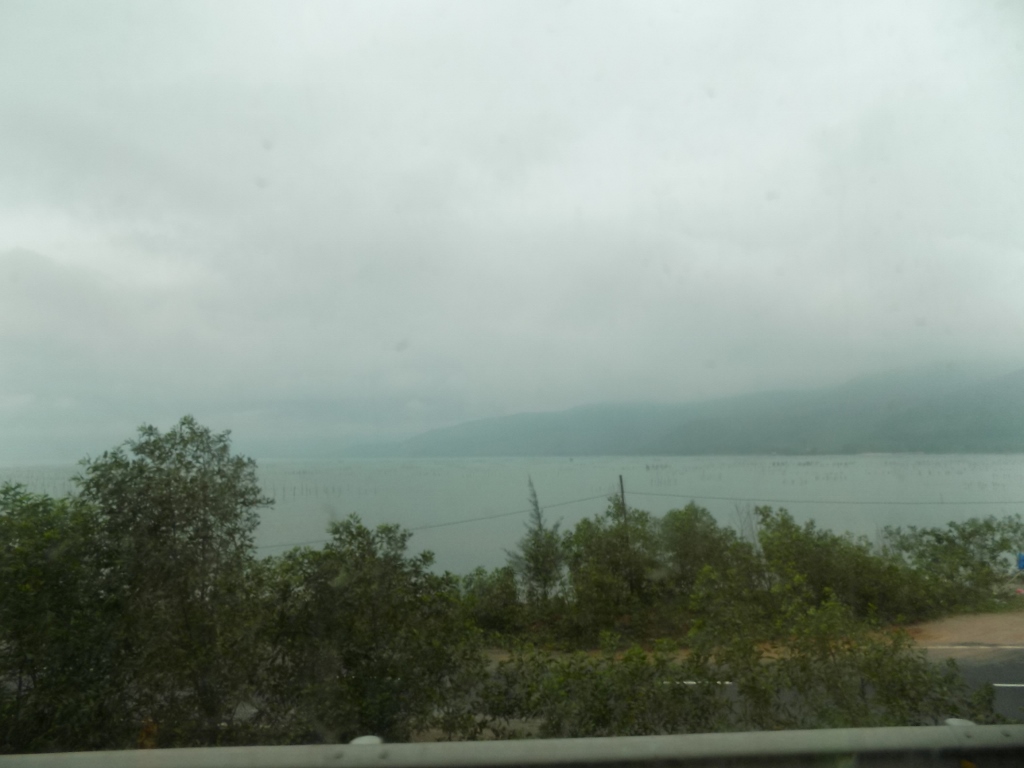 On our way to Hoi An
On our way to Hoi An
By the way, the sea that may be seen in the above picture is officially called South China Sea, but the Vietnamese call it East Sea.
These two cities are linked by two roads. One is more recent and leads through a tunnel in a mountain, and it is foreseen only for cars, coaches and trucks. Those who ride motorcycles or want a more picturesque trip go over the mountain. We even thought we could perhaps listen to the advice of the Italian we had met in Ha Long Bay and, when returning to Hue, make an arrangement with an agency to take us over the mountain by motorbikes (frequent practice by tourists), but we gave up on account of the forecasted rain. Also, if it is cloudy, then the possibility of enjoying the fine view of the Hai Van Pass wanes, and we would do the whole thing only in order to see that famous view.
So, having arrived in Hoi An, we first went to the hotel which was exceptionally nice and cosy although some 15 minutes on foot away from the old town, but not only we did not mind this, we even both appreciated the walk. So, we left our things in the room and headed for the centre, i.e., the old town of Hoi An.
That old town of Hoi An is in the UNESCO’s World Heritage List and the reason is that it has remained practically unchanged for a few centuries. Why is this important? Well, because in the past (from the 15th to the 19th century) Hoi An used to be a very important port where not only the Vietnamese, but also the Chinese and Japanese, as well as different Europeans congregated and traded. They also lived here and built their houses and community assembly halls. Each one of those nations brought something of their own. With time, the Thu Bon river, at which Hoi An is located (the town is a little bit away from the sea and the port was actually reached by this river), became increasingly shallow on account of depositing sands and so since the end of the 19th century, Hoi An stopped being an important port and then the time practically stopped here, primarily for the town’s architecture. Due to the picturesque appearance of the old town, in the 21st century Hoi An became a very popular tourist destination. Although the houses in the old town are still inhabited, in their section facing the street, nowadays they almost all have boutiques, restaurants, cafés, souvenir shops, galleries, etc.
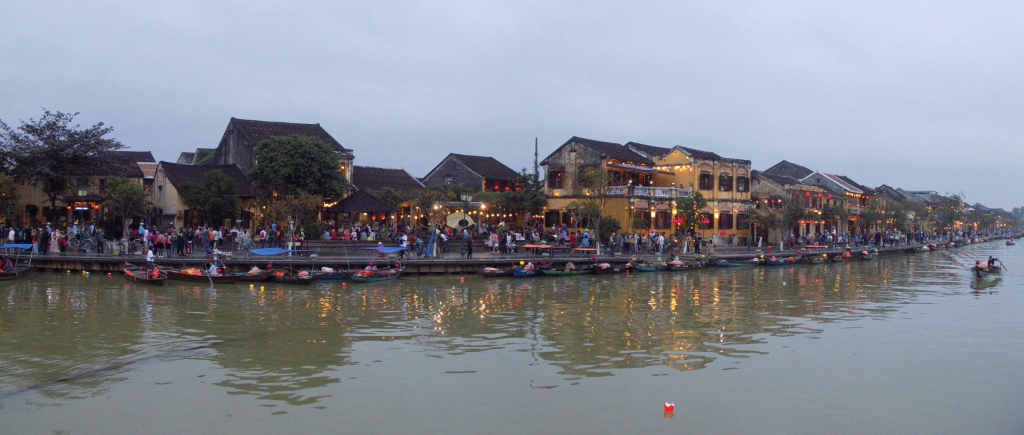 Hoi An, the banks of the Thu Bon river
Hoi An, the banks of the Thu Bon river
When we reached the old town, having crossed a bridge and after passing through the central market, I was at first almost suddenly overcome by crowds, noise, and a lot of people and images that changed in front of my eyes. My first impression was not favourable. Soon we sat at a restaurant with a terrace overlooking the river and we had something to eat there, but the food was nothing special and was certainly scarce. Still, we were no longer as hungry as we were when we just arrived in the centre.
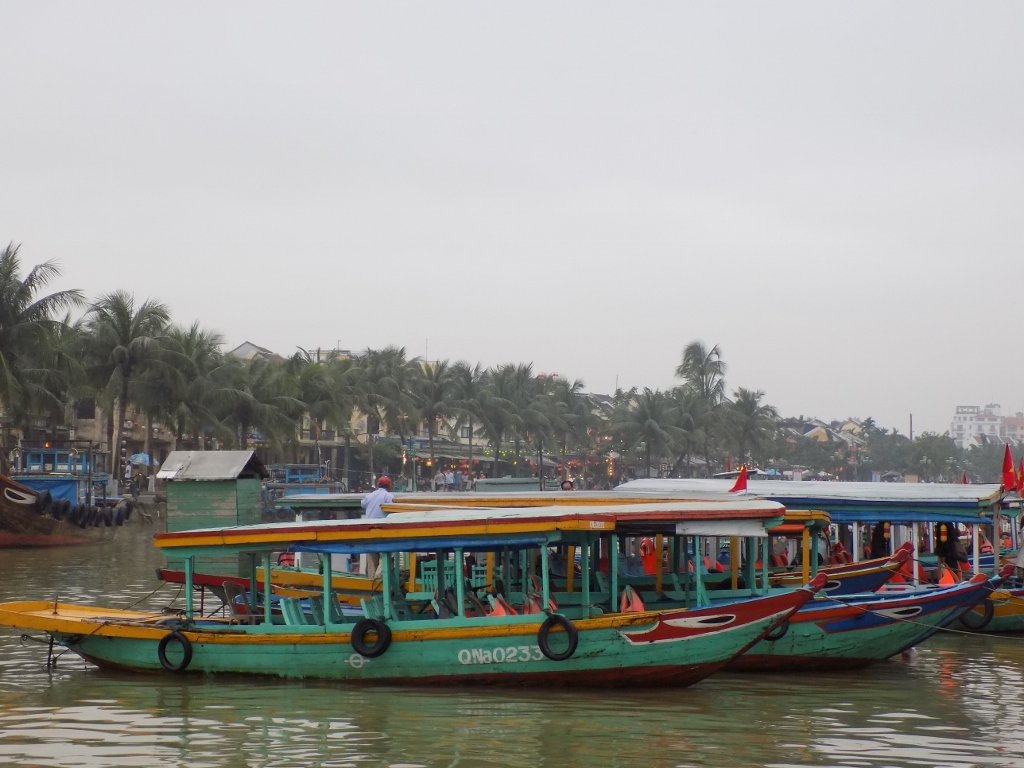 Hoi An, Thu Bon river
Hoi An, Thu Bon river
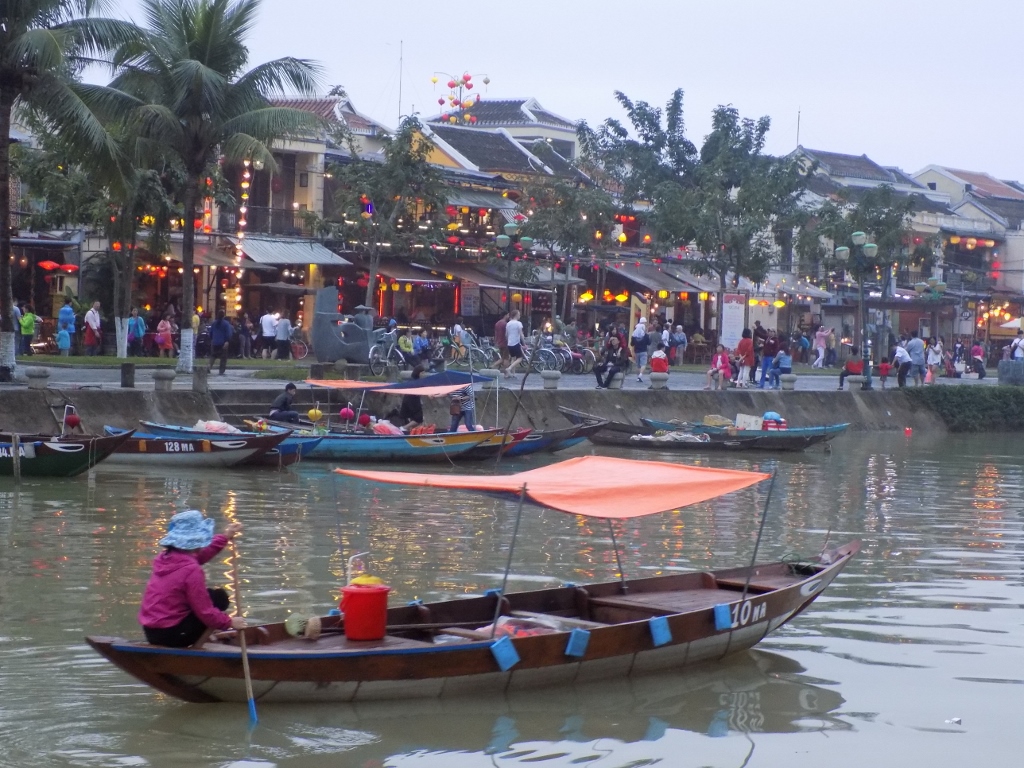 Thu Bon river and the view at the cafés and restaurants on the isle of An Hoi
Thu Bon river and the view at the cafés and restaurants on the isle of An Hoi
On the other side of the river, on an islet, I saw numerous lights and there are also many cafés, restaurants and shops there. We went over there for a coffee and soon we also had ice-cream. The ice-cream we opted for was made of cinnamon, mango and passion-fruit, and they were really great. In the meantime I started getting used to the crowds, relaxed and began to enjoy the sights, but it was already getting dark, it was cloudy all the time and even started drizzling at some point, but it was over pretty soon.
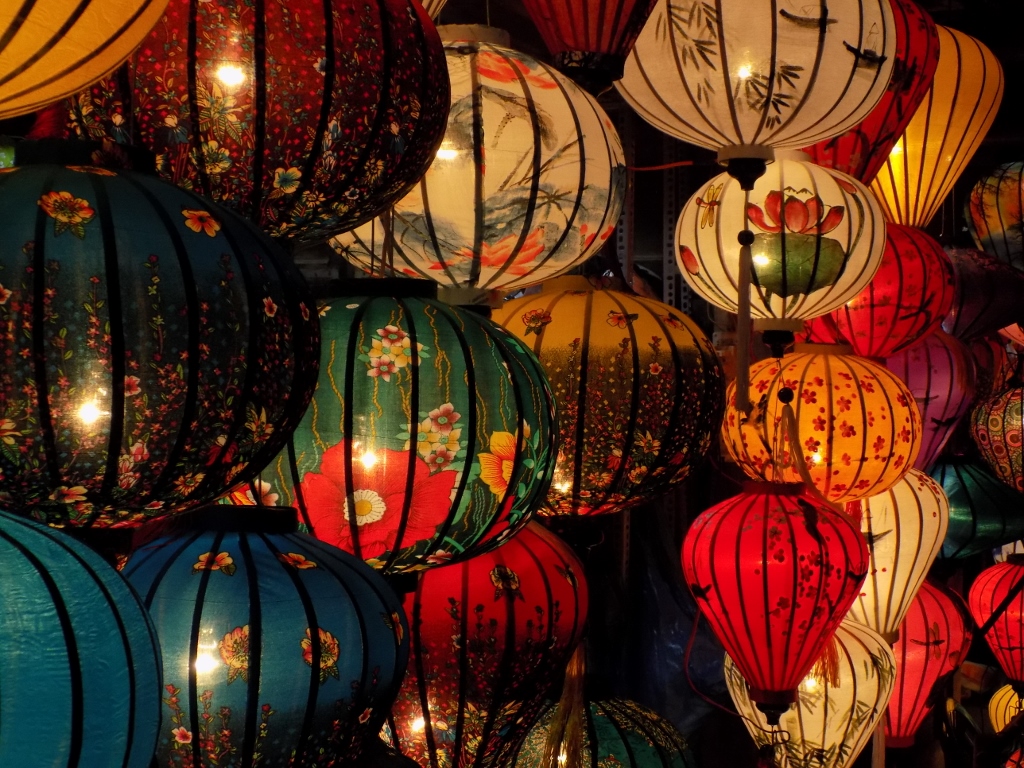 Lanterns sold at the Night Market on the islet of An Hoi
Lanterns sold at the Night Market on the islet of An Hoi
After strolling around the tourist streets of the islet, we returned to the old town and there we went to the beautiful Japanese Covered Bridge.
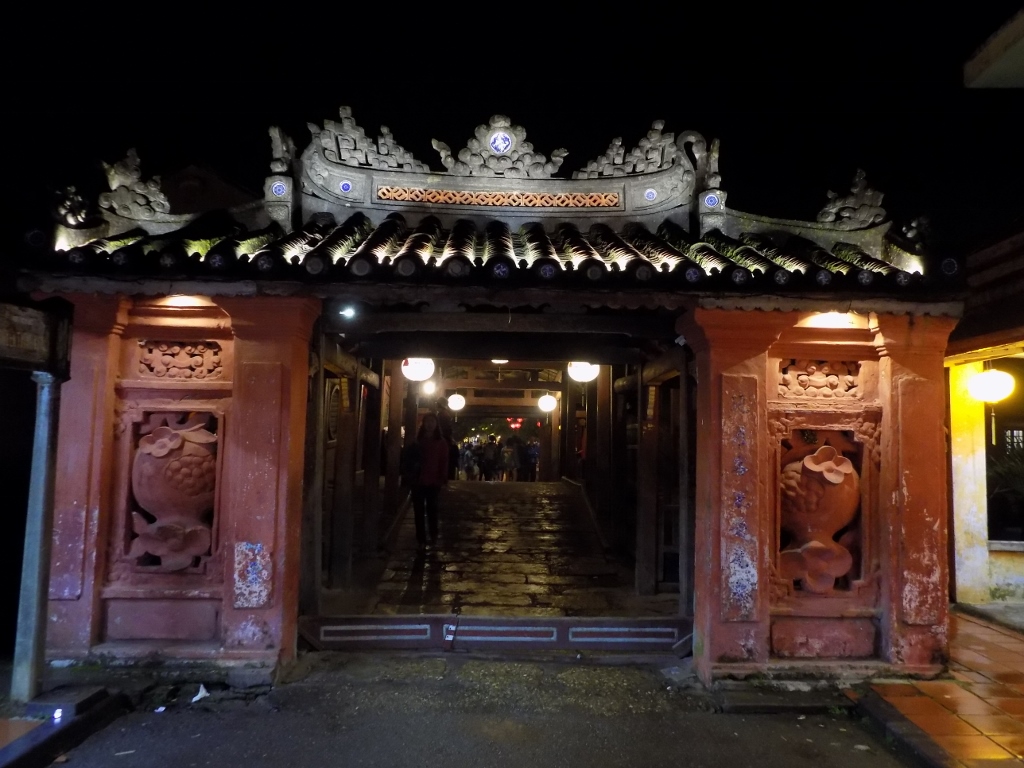 Japanese Covered Bridge
Japanese Covered Bridge
The bridge continues into Tran Phu street and following this direction we got to the Central Market. In the middle, there is a pavilion and when we peaked inside, we saw numerous open style “kitchens,” with display fridges containing bowls and plates with different ingredients, and with benches arranged around the fridges.
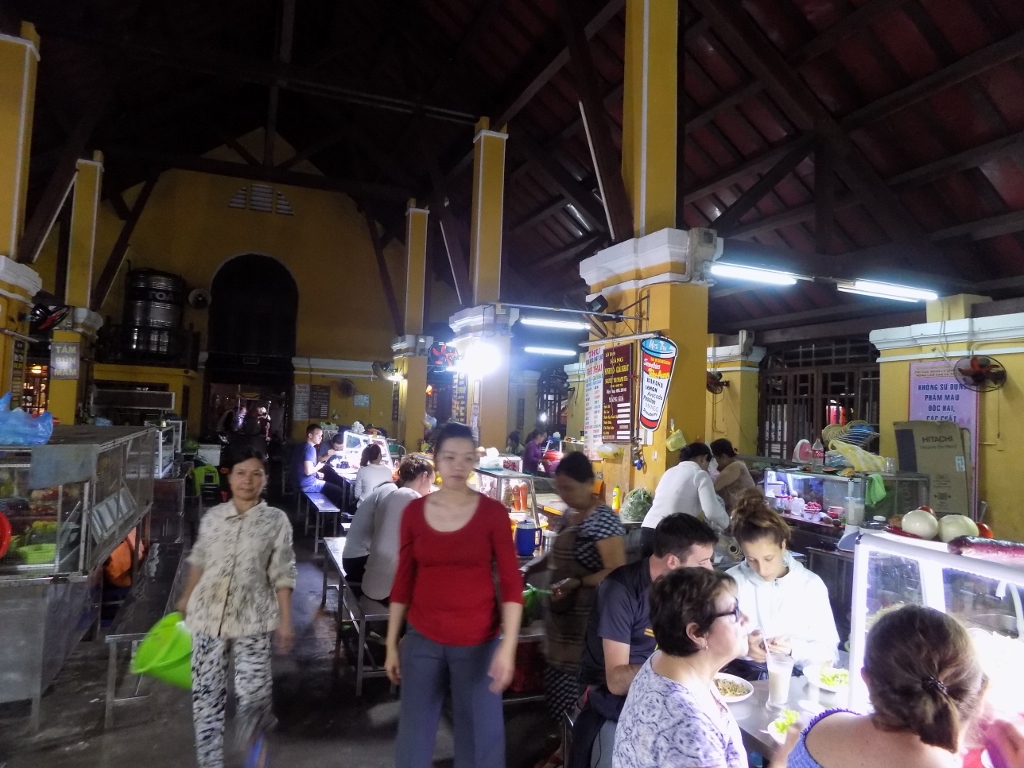 Central Market “restaurants”
Central Market “restaurants”
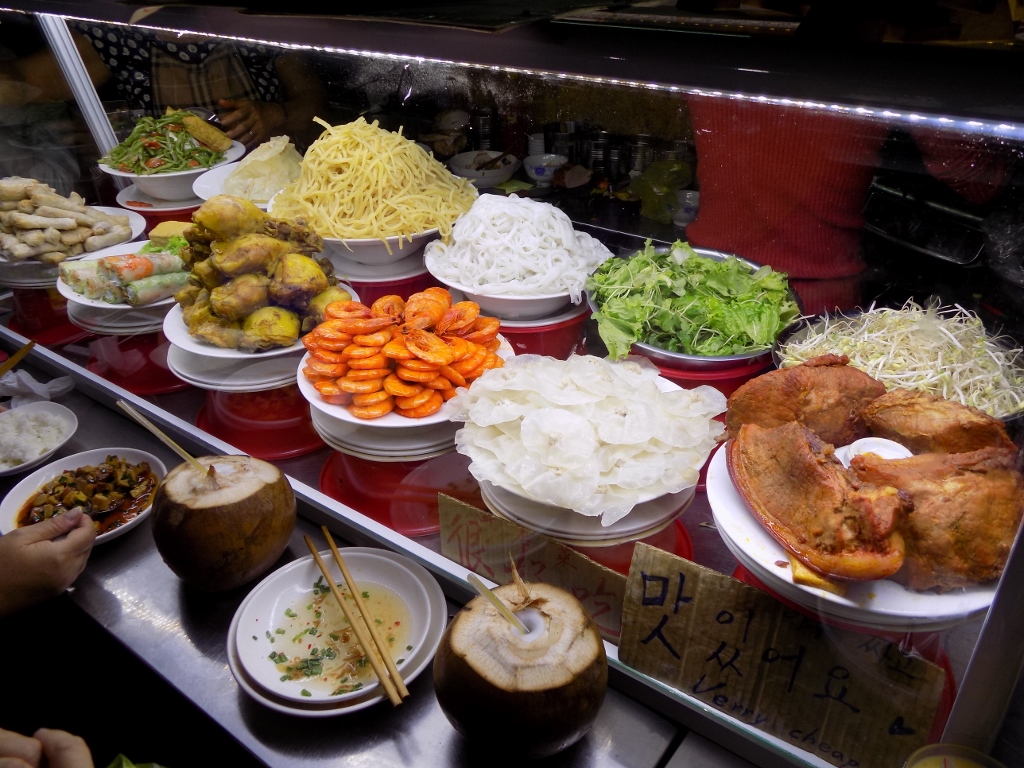 Display fridge with potential ingredients
Display fridge with potential ingredients
We got in and decided to take a seat at one place, but I’m sure the thing would be the same if we sat anywhere. There we ordered food that was made right there on the spot and it was – brilliant!
We opted for shrimp noodle soup, fried wontons, as well as cao lau, a well-known local specialty.
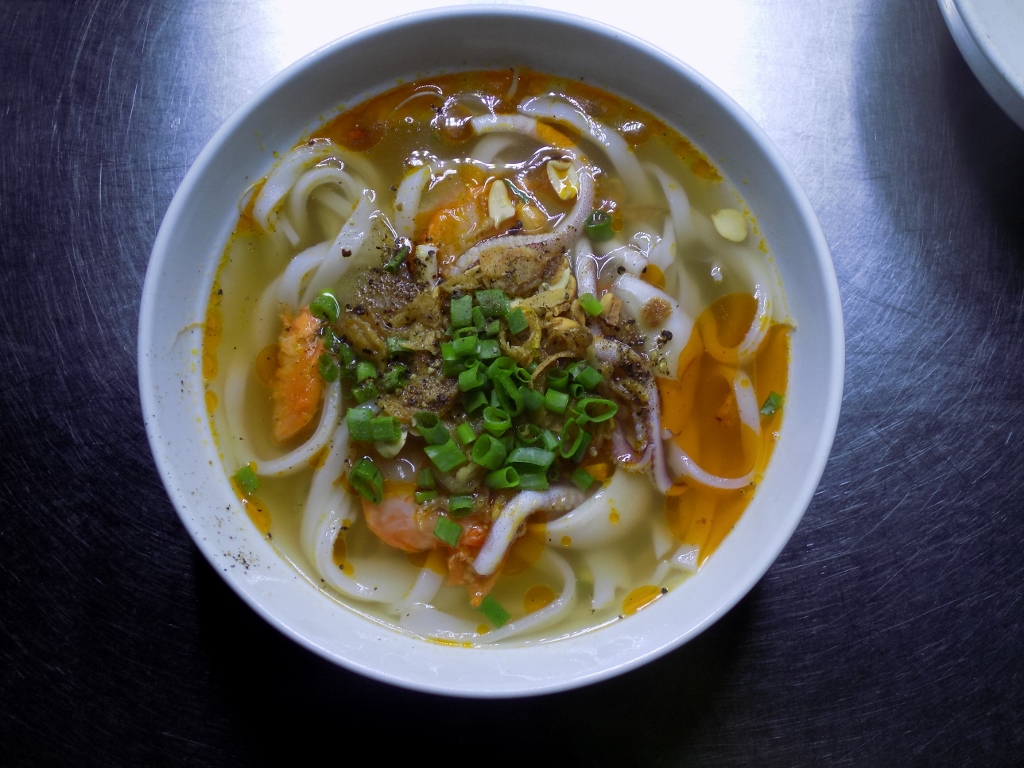 Shrimp noodle soup
Shrimp noodle soup
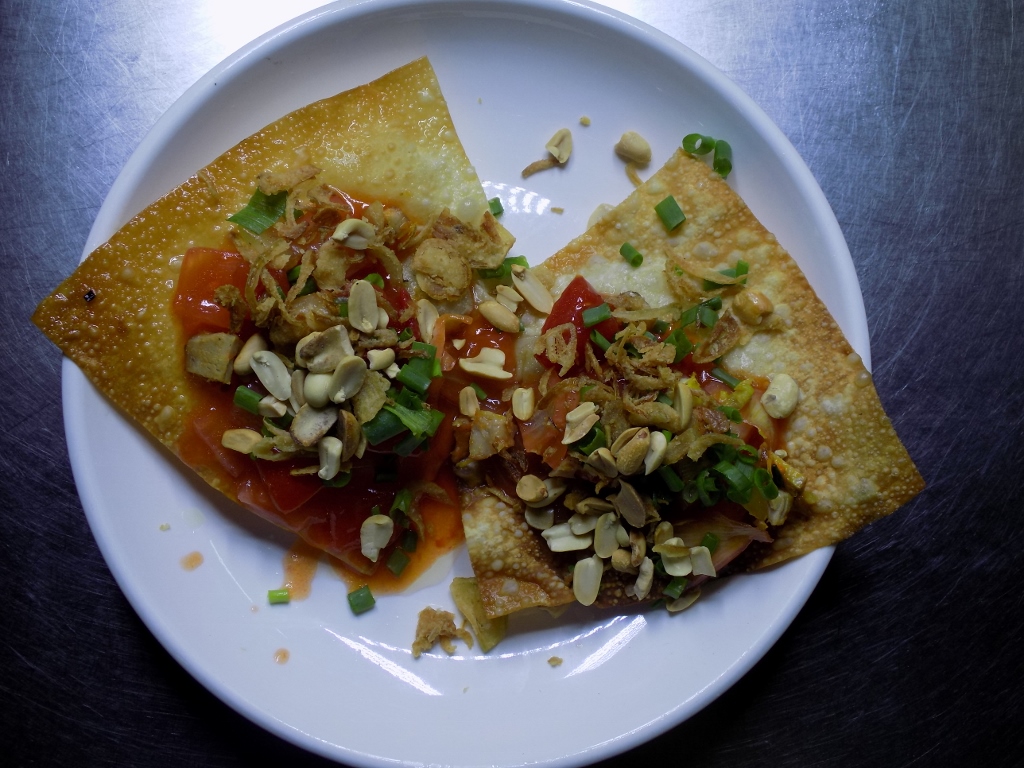 Fried wontons
Fried wontons
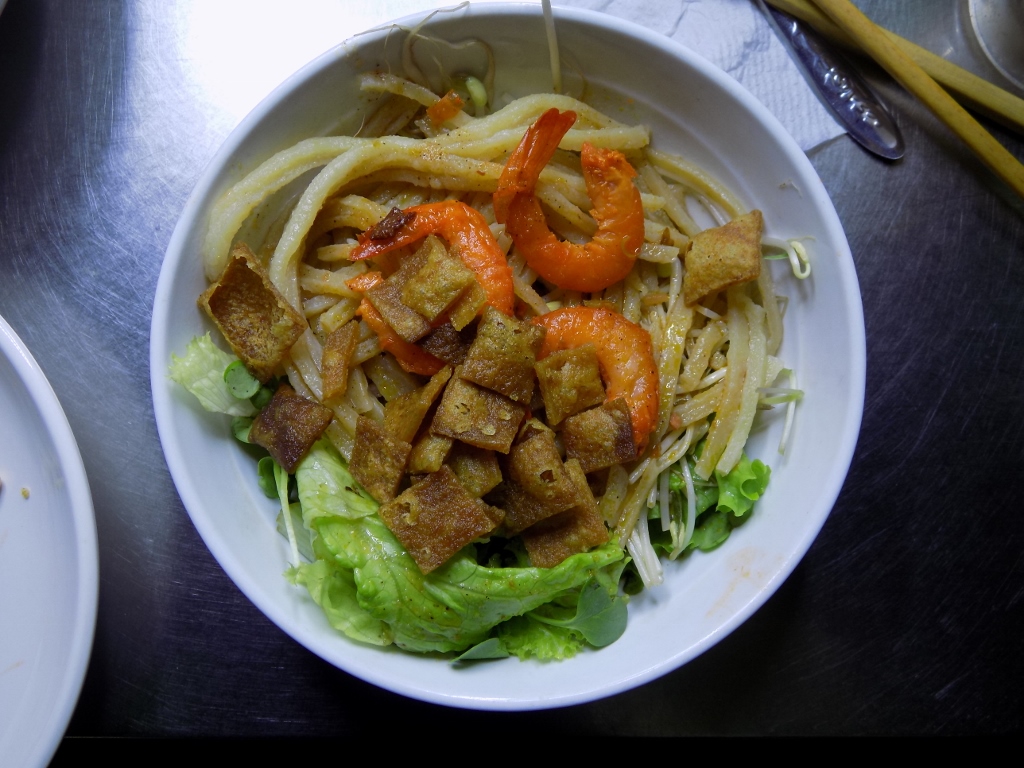 Cao Lau
Cao Lau
By the way, talking about food, during our first meal in Hoi An we tried another local specialty – White Roses.
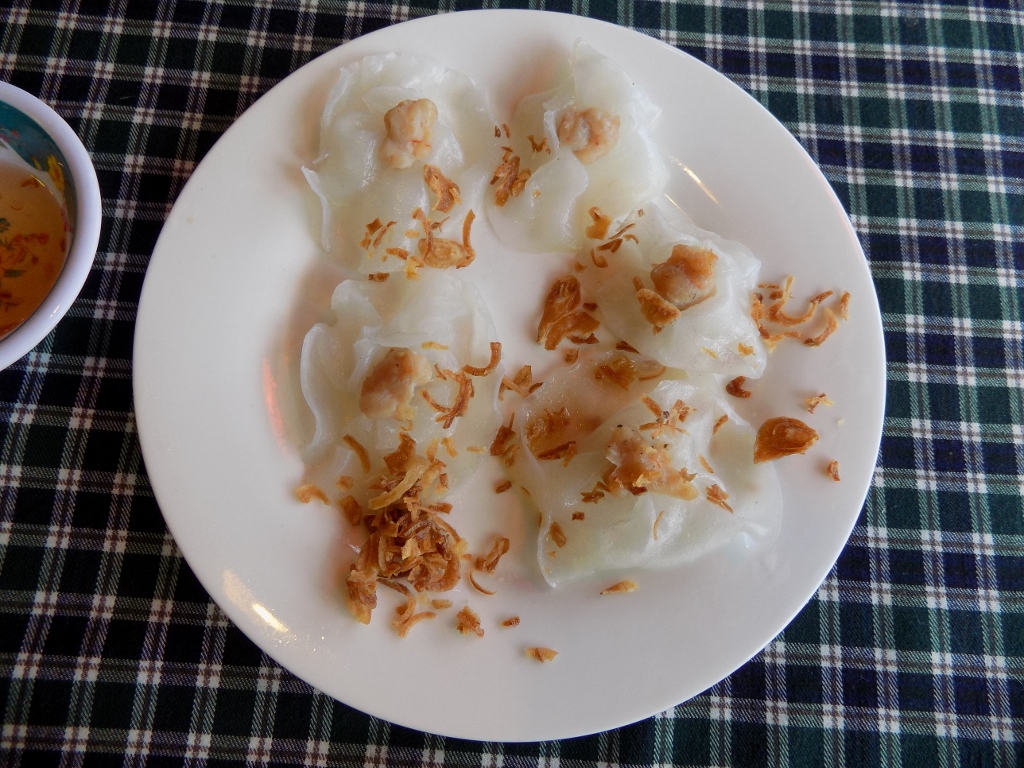 White Roses
White Roses